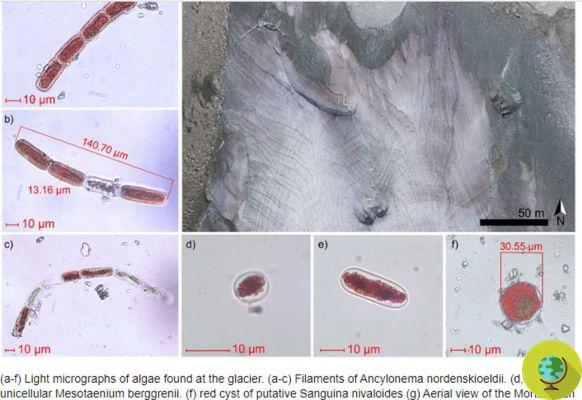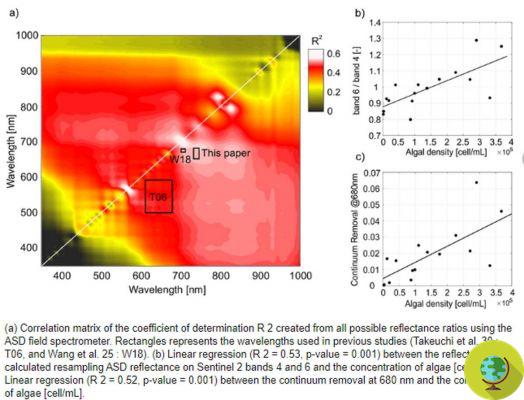Even the alpine glaciers are today threatened by a microscopic algae that changes their color and accelerates their melting.
He is about to end up run over, his mother saves himPurple-red snow and ice from the Alps. As happened in Greenland, alpine glaciers are also threatened by a microscopic algae that changes their color and accelerates their melting.
This is what was learned for the first time by researchers from the University of Milan-Bicocca, who publish the results in Scientific Reports.
Pink snow, a terrible new environmental threat to the Arctic and Antarctica (PHOTO)
Among the different algae species identified in the analyzed samples, they found a notable abundance of Ancylonema nordenskioeldii, a species that had never previously been documented in the Alps and that rather dominates the algae blooms on the Greenland ice sheet.
"In Greenland, the presence of algae on the polar ice cap causes the darkening of a large portion of ice (about 100.000 square kilometers) known as the 'dark zone', amplifying the summer melting of the ice - explains the first author of the study, Biagio Di Mauro. In the European Alps this phenomenon had never been quantitatively identified. Our study for the first time has shown that the bio-albedo feedback process can also take place in our latitudes. In particular, the samples collected at the Morteratsch glacier (Engadine, Switzerland) made it possible to sequence the DNA of the organisms present on the surface of the glacier and study them under the microscope. The results highlighted the presence of colonies of the Ancylonema nordenskioeldii species, known for its abundance in the dark zone in Greenland ”.
Not just for the rise in temperature. If the ice on the Alps melts it is also due to some species of algae….
Posted by University of Milano-Bicocca on Tuesday, April 14, 2020
How is coloring made possible?
The coloring is a natural phenomenon due precisely to the algae of the Ancylonema nordenskioeldii species, which manage to live in the extreme conditions of the glacier surface. In summer, they use the melt water present on the surface to multiply and spread. The warmer it is, the more water is available on the glacier and the more they thrive. Their purple color is due to the pigments used in photosynthesis and their presence, however, has the consequence of making the ice darker, so it absorbs more heat and favors melting.

© Researchgate

© Researchgate
The presence of the red alga, in essence, gives the snow a lower albedo and makes it melt more quickly. And not only that: the more the snow and the glaciers melt, in the opinion of experts, the more the presence of the alga increases in a chain effect and a negative impact on the climate that should not be underestimated.
HERE you can find the complete study.
Fonte: Scientific Reports / Unimib
Read also:
- Monte Rosa continues to crumble: the unrecognizable Belvedere glacier
- Climate: Piedmont lost 20 glaciers in 50 years
- Alaska: the impressive video of the glacier crumbling into the sea
- Let's say goodbye to the Marmolada Glacier: for the CNR it will disappear in 25 years
- The death of a glacier live: maxi collapse on Mont Blanc (VIDEO)


























